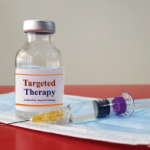In the tight control/treat-to-target group, visits occurred every four weeks and a pre-specified strategy of treatment intensification until the patient achieved the target ASDAS of <2.1. The usual care group had visits every 12 weeks and treatment was at the discretion of the rheumatologist. The main outcome was the percentage of patients with a ≥30% improvement on the ASAS-Health Index (ASAS-HI).
By the conclusion of the trial, no significant difference was observed in the main outcome of the tight control/treat-to-target group vs. the usual care group (47.3% vs. 36.1%). All secondary efficacy outcomes (i.e., partial responses for ASDAS, BASDAI, the patient’ global assessment of disease activity, etc.) were more frequent in the tight control/treat-to-target group than the usual care arm; however, these differences did not reach statistical significance. Tight control/treat to target was shown to result in more overall cost savings than usual care.2
Analysis
Although TICOSPA was deemed a negative study, Dr. Haroon had several thoughts as to why we may want to reconsider its findings. In the study, only about 26% of patients achieved low disease activity overall, whereas this number—historically, from other trials—has been closer to 45–50%.
He also noted that NSAID use was low in the study. A question remains about whether combining NSAIDs with a biologic medication may work better than biologic monotherapy for patients with SpA. Additionally, only tumor necrosis factor-alpha inhibitors were used in TICOSPA. We now have a host of other biologics routinely used to manage SpA that may, in some patients, have better efficacy.
Dr. Haroon also explained that the total number of participants in the study was small and may have been underpowered to detect a significant difference between the groups. Additionally, only axSpA Centers of Excellence were included in the study. Thus, usual care in these centers may have differed from that seen in more general rheumatology practice.
Treatment Targets
Dr. Haroon presented a compelling case for thinking more deeply about treat- to target for patients with SpA. He noted that knowledge gaps exist in the world of SpA regarding the best treatment target to use, how frequently to measure this target and how to measure it.
Traditionally in rheumatology, targets are remission or low disease activity.” But how should this be applied in patients with SpA when they may have domains of disease that don’t align with one another (e.g., peripheral arthritis, dactylitis, enthesitis, axSpA and extra-articular manifestations)?

